Types of Clouds: Understanding Their Formation and Classification
Learn about the different cloud types, from wispy cirrus to towering cumulus, and understand what each signifies in our skies.

Rocks are the Earth’s time capsules, each one telling a tale that takes us back millennia. They’re the ultimate keepers of history, recording every volcanic tantrum, sandy beach excursion, and even the atmospheric mood swings through their layers and compositions.
There are three main categories: igneous, sedimentary, and metamorphic. Igneous rocks form from the cooling of molten rock, whether it oozes out as lava or stays hidden beneath the surface as magma. Sedimentary rocks are akin to nature’s scrapbook, piecing together fragments of mineral, plant, or animal matter over time. Metamorphic rocks? They’re the undercover agents of the rock world, starting off as one type before transforming under intense heat and pressure conditions.
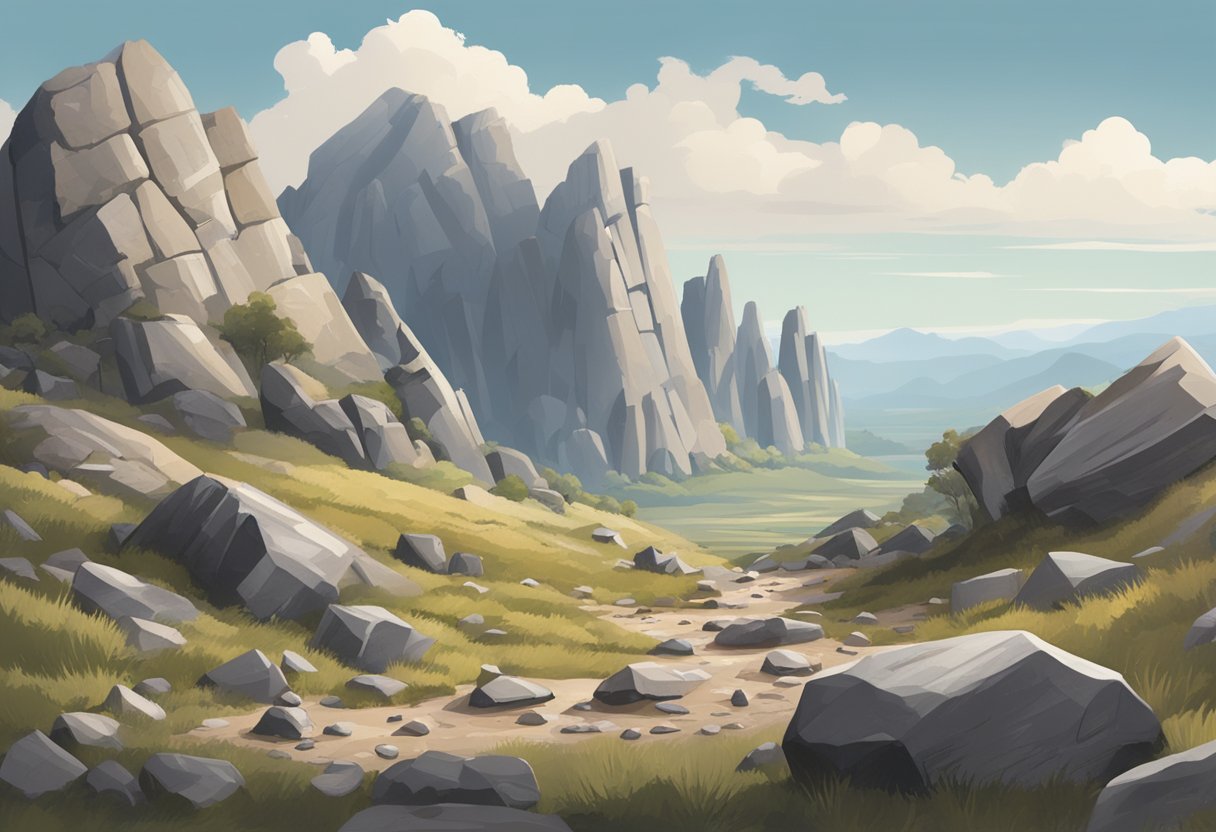
Understanding rocks goes beyond just admiring their rugged looks or picking the perfect one to skip across a pond. They’re a cornerstone of our planet’s fabric, vital players in the geological game of hide and seek, offering clues about Earth’s history and future shifts.
Their characteristics – from texture to mineral composition – help scientists decipher this story. But wait, it’s not just science. From the marble in your kitchen to the gravel in your driveway, rocks are also the unsung heroes of our daily lives, featuring in construction, medicine, technology, and even art.
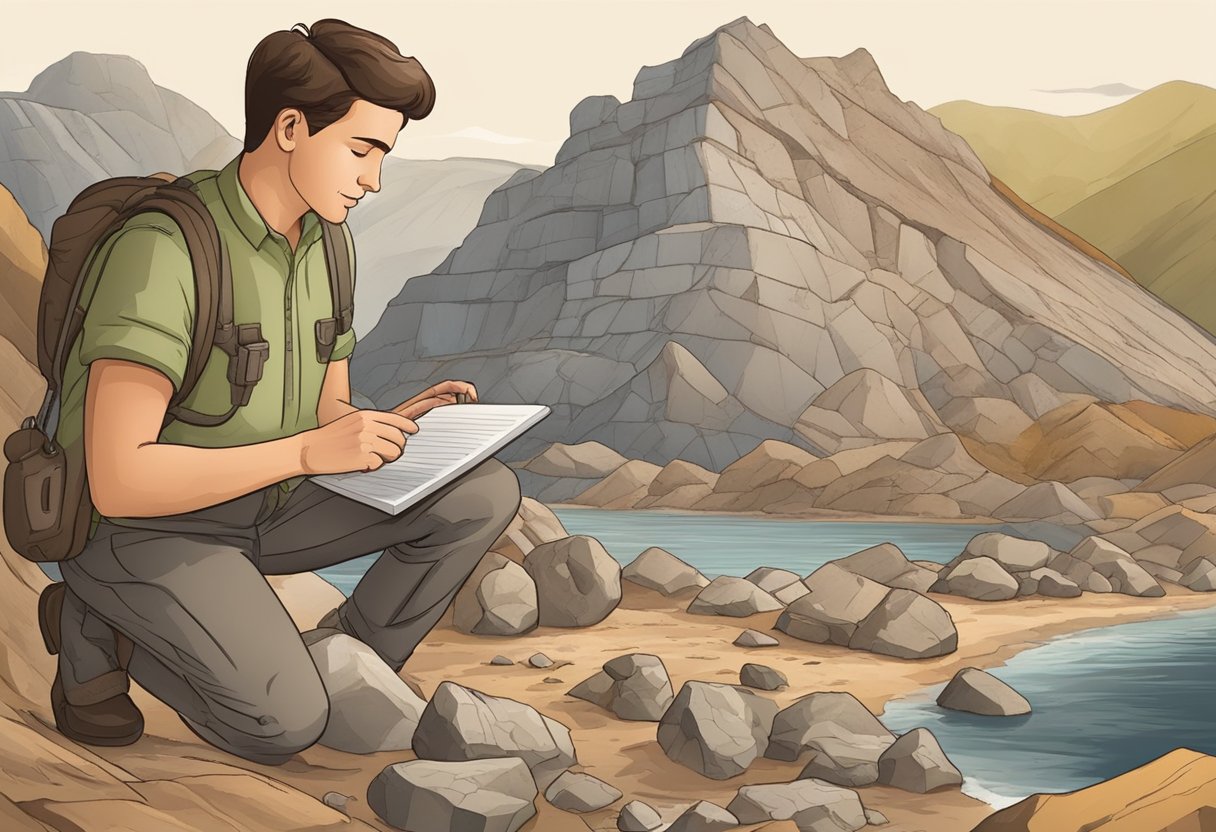
If you ever find yourself chatting with a geologist, you’ll notice they’re kind of rock stars—with actual rocks. Behind those stylish safety goggles, they see the world as an endless collection of igneous, sedimentary, and metamorphic rocks. So, let’s rock this and understand what makes each type special.
These are the cool kids in the geology neighborhood, literally! They form from cooled magma or lava. When it’s a slow cool, you get those with big crystals; call them intrusive. Quick cooling gives you fine-grained extrusive ones. You’ve probably met granite, the counter-top celebrity, which is an intrusive igneous rock.
Now, these guys are like memories of earth’s past. They’re made from particles of older rocks, plant debris, and sometimes the remains of dead sea creatures—kind of like nature’s own time capsule. They pile up layer by layer, like the pages of a history book, and over time, they get pressed into rocks like sandstone.
Enter the transformers of the rock world. They start out as one type but change with heat and pressure—no melting required. Just imagine clay transforming into slate while it whispers, “More pressure, please!”
Remember, all these rocks can be connected through the rock cycle—a rock’s version of a glow-up or a mid-life crisis. They can melt, erode, compress, or get heated and come out completely different. Your front yard’s pebble could be a former volcano celebrity or a seabed artifact. You never know in the wild world of rocks!
And here’s a nugget of wisdom: all rocks are made of minerals—nature’s building blocks, giving rocks their various properties and suave looks. Rocks, in all their variety, literally lay the foundation of our planet. So next time, give a rock some respect; it’s not just a stone—it’s a story!

Rocks are history frozen in time, quite literally! From hot molten magma to layers of sediment on the riverbed, the formation of rocks is a story of transformation. Let’s rock and roll through the fascinating processes that create the various kinds of rocks found on Earth.
When it comes to birthdays, igneous rocks know how to make an entrance—straight from the heart of our planet. Magma, the red-hot liquid below Earth’s surface, is the star of the show. When conditions are just right, and the magma cools and solidifies, you find yourself with a shiny new igneous rock. The cool thing is, you’ve got two types:
Let’s talk about sedimentary rocks, the storytellers of geology. These rocks are all about layers—layer upon layer of sediment like sand, silt, and the remains of once-living things that accumulate in oceans, lakes, and rivers.
It’s like nature’s own press compressing history into a stone diary!
Metamorphic rocks are the undercover spies of the rock world, always changing their identity. They started out as one type of rock, but then heat and pressure deep within the Earth made them go, “Let’s mix things up.”
So next time you see a marble statue, think about the incredible backstory of pressure and change that led to its creation!
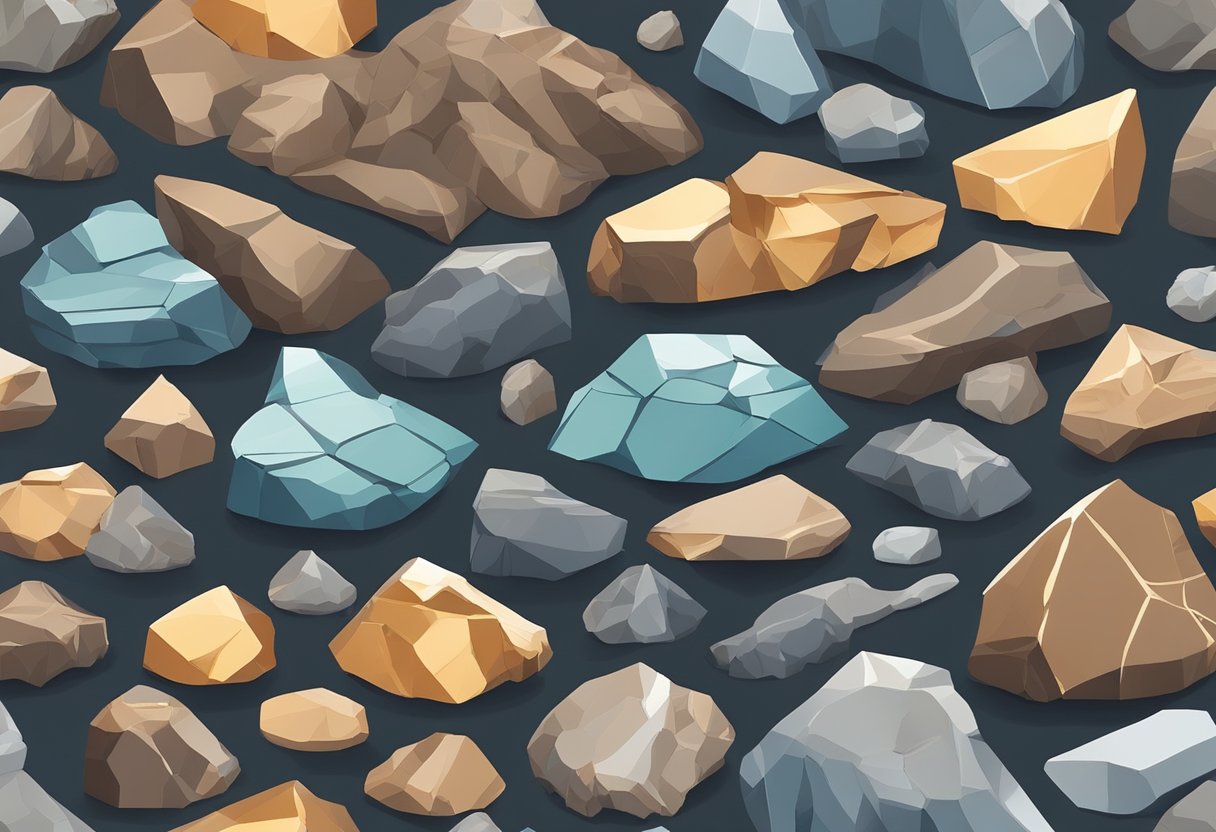
Before we break out our geology hammers, let’s make sure we know what to look for. Each rock type has its own set of identifying features, from the minerals that compose them to their textures and formation processes. It’s like playing detective, but with rocks.
Igneous rocks are the zesty originals of the rock world and form straight from molten material. Check out these characteristics to spot them:
Sedimentary rocks are like the diaries of the Earth, layered with stories. Here’s what to look for to read those tales:
Metamorphic rocks have been through the wringer—they’ve been heated and pressured into something new. Here’s how you can identify these undercover rocks:
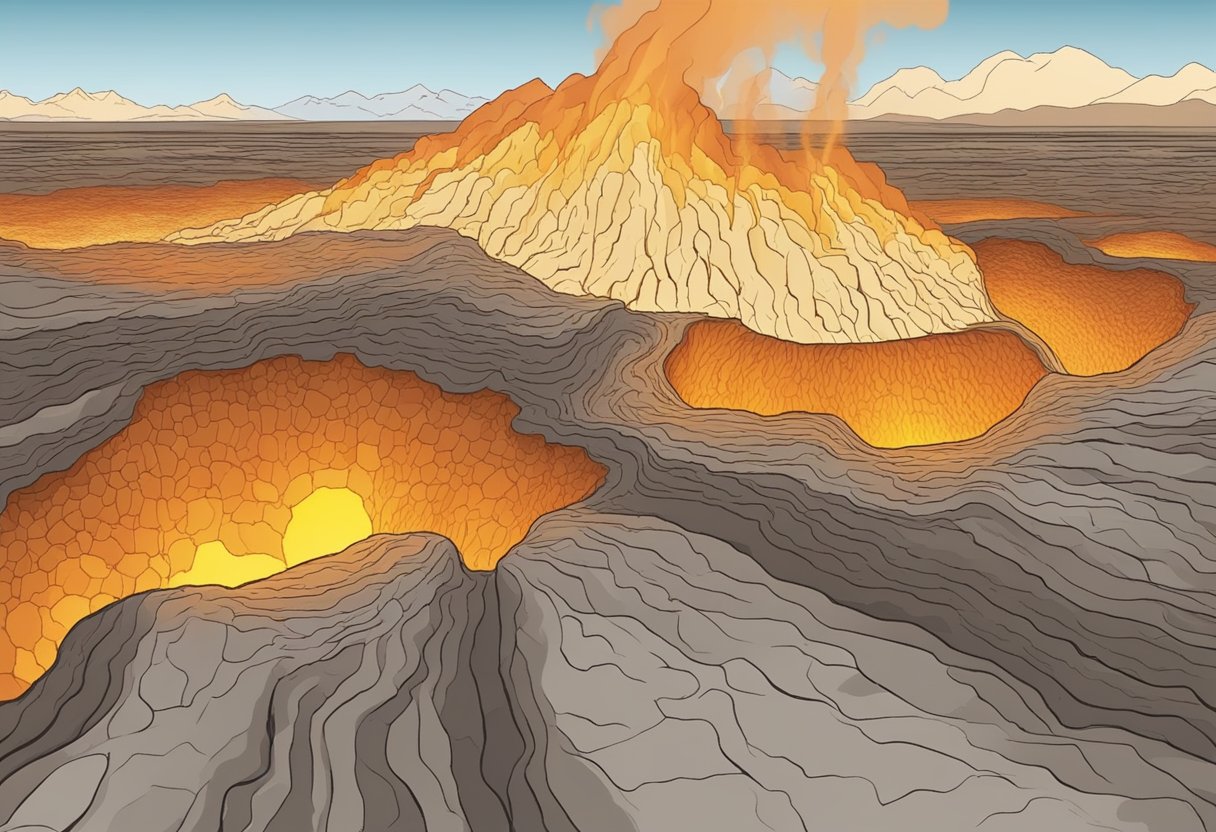
Get ready to rock because we’re about to uncover how your average rock isn’t just sitting around—it’s on a globe-trotting cycle that would make your travel diary blush. The rock cycle is a journey of transformation, where pressure, heat, and time team up to turn old rocks into new tourists of our planet’s crust.
Your igneous rock starts life as a hot-headed molten material called magma. When it cools off and solidifies, usually beneath the surface, it forms intrusive igneous rocks with large, eye-catching crystals. If it chills out above ground after a volcanic eruption, you get extrusive igneous rocks with finer textures.
Now, let’s add some drama. Weathering and erosion play the ultimate tag-team—breaking those rocks down and dragging the pieces around. Those bits, called sediments, travel all over, seeing the sights until they settle down (because everyone tires eventually). Via a process of compaction and cementation, these sediments stick together, and voilà, you’ve got yourself a sedimentary rock.
Sedimentary rocks might seem like they’ve settled down, but with enough heat and pressure—and we’re not talking about a stressful day at work—they transform yet again. This isn’t a melting situation, but a solid-state party, where minerals get all cozy and reorganize themselves into new structures. Welcome to the world of metamorphic rocks—the undercover agents of rocks, with a whole new identity, texture, and chemical composition.
You’d think metamorphic rocks have seen it all, right? Wrong. They’ve got one more trick up their sleeve: melting. When conditions get just too extreme inside Earth’s crust, our metamorphic friends melt back into magma, forgetting their past lives as they prepare for a rebirth. Once they cool down again, they join the ranks of igneous rocks, and the cycle starts anew. It’s the ultimate makeover—a geological spa day that ends with igneous rocks emerging, cool and crystalline, ready to begin their adventure all over again.

Before you even ask your neighbor’s pet rock about the gossip of the geological world, let’s dig into why rocks are the ultimate storytellers of Earth’s melodramatic history and processes. They aren’t just a hard place to sit on; they’re the pages of Earth’s diary.
Imagine this: rocks as a history book, but without all the words—each layer is like a silent tweet about what went down millions of years ago. Sedimentary rocks are the gossip queens, packed with hints like fossils. It’s in these pages where you find out about ancient environments, whether it was a sassy sea or a dry desert that dominated the area. Stratification, the layering of these rocks, is like skimming through Earth’s old Facebook posts: “Big swamp party, 300 million years ago, bring your own algae.”
When igneous rocks join the party, things heat up—or, should we say, cool down, since these guys form from cooled magma or lava. They’re like snapshots of volcanic activity. An outcrop showing these rocks is basically Earth bragging about its volcanic past.
Ever wonder what rocks say about Earth’s ongoing drama? Metamorphic rocks are the real transformers, telling the tales of pressure-cookers and heated arguments deep within Earth’s crust. These former sedimentary or igneous members underwent a complete makeover via metamorphic events, and they’re not shy about their glow-up.
And don’t get me started on the dynamic duo of erosion and weathering! These processes break up and wear down rocks, moving the pieces around like they’re rearranging furniture, constantly redesigning landscapes. Believe it or not, when you kick a pebble down the road, you’re sending it on a geological journey—except it probably won’t send you a postcard.
Moving on, if you want to witness Earth’s tectonic trendsetters, keep an eye on tectonic movements. They’re major influencers on how rocks form and appear on the surface. Trust me, when these below-ground forces strut their stuff, mountains can form, and continents go on a slow-motion catwalk!
So next time you pick up a rock, remember you’re literally holding a piece of Earth’s epic saga. How cool is that?

From the countertops in your kitchen to the iconic structures that pierce the skyline, rocks are the silent backbone of civilization. Let’s chip away at how rocks are more than just stone-cold players in our daily lives.
Granite is the poster child of buildings and monuments; it’s the all-star in your kitchen as countertops and has been playing the long game as a favorite for tombstones because of its durability. Limestone steps up as the unsung hero, forming the foundation of buildings, while marble adds an air of affluence to structures and statues alike.
In this rocky business, pumice takes a gritty stand in the abrasive industry, scrubbing up everything from your dirty dishes to dead skin cells in exfoliating creams. Coal and salt aren’t just for BBQs and popcorn; they fuel industries and keep our roads ice-free.
Did the school ever teach you about the rock cycle? Don’t take it for granite! This is where classification shines, helping you decipher the origins and makings of igneous, metamorphic, and sedimentary rocks. These aren’t just fancy terms; they’re classifications that hint at the enduring saga of rocks and minerals like quartz shaping our planet and spurring scientific curiosity.

When you’re trying to identify a rock, think of yourself as a detective. However, instead of fingerprints, you’re looking for clues like grain size, texture, and what minerals it’s made of.
First things first, check out the grain size. If your rock has grains you can see with the naked eye, we’re off to a good start. Big grains mean the rock had time to grow those crystals, kind of like how it takes time for you to grow from a kiddo to a full-sized rock detective!
Secondly, let’s feel the texture. Smooth and shiny? Rough and sandy? Those feels can tell us if the rock lived a luxurious life in a volcano as igneous, was pressed into existence among layers like sedimentary, or got a major makeover with heat and pressure to become metamorphic.
Now, about the minerals – it’s like identifying the ingredients in your favorite pizza. You can often spot quartz (think of it as the cheese of minerals), feldspar (the crust), and mica (the spicy pepperoni flakes). Each mineral has its own signature that can help you deduce what the whole rock is.
| Property | What to Look For |
|---|---|
| Grain Size | Visible? Coarse? Fine? |
| Texture | Smooth? Rough? Glassy? |
| Minerals Present | Quartz, Feldspar, Mica, etc. |
| Overall Composition | Igneous, Sedimentary, Metamorphic |
Remember, you don’t need a magnifying glass or a lab coat to start identifying. Just roll up your sleeves, grab your rock, and trust your detective instincts. Before long, you’ll be classifying rocks like the best of geologists! Just keep at it, and you’ll crack the rock’s code in no time.
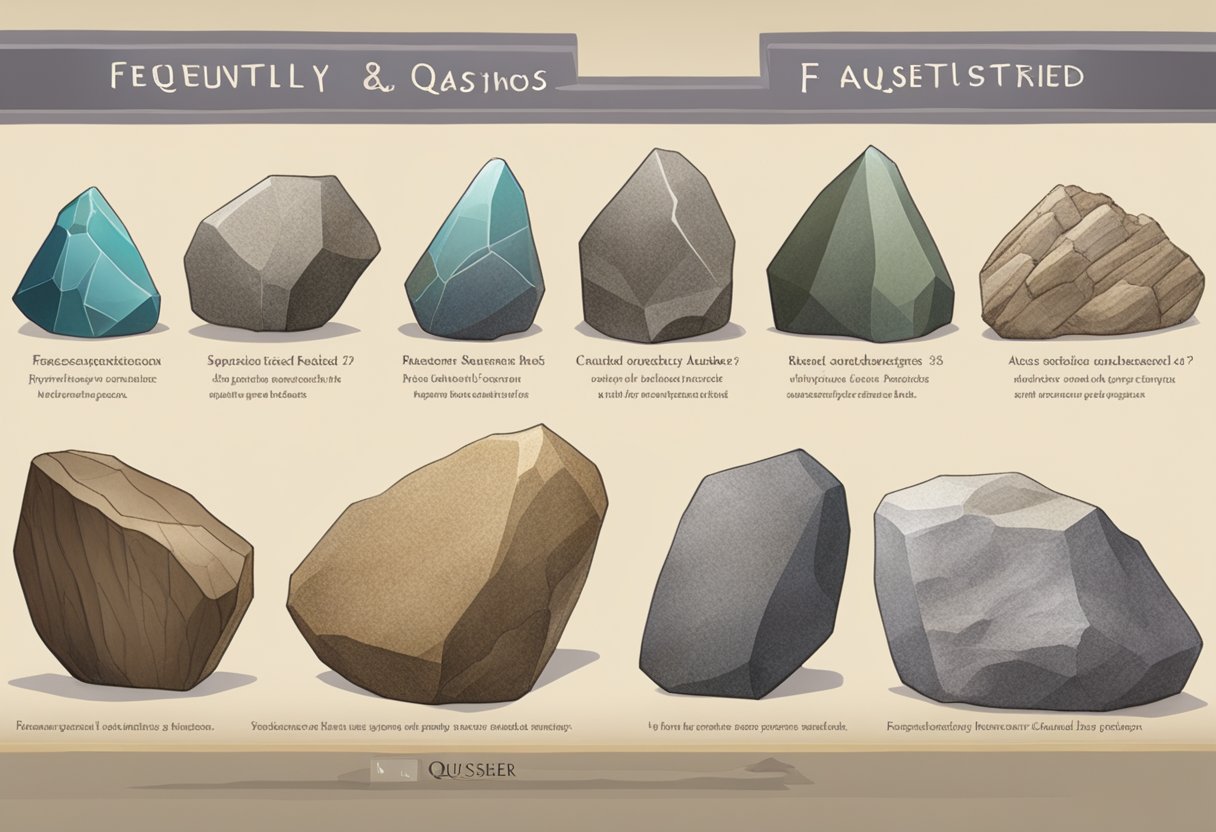
In this quick dive into the rocky world beneath our feet, you’ll get to grips with the cool basics of rock classification and the processes that give us the diverse stones we tread on daily.
You see, geologists are like meticulous librarians, but instead of books, they’ve got rocks. Rocks are sorted into three main types based on how they come into existence. These types are igneous, sedimentary, and metamorphic.
Igneous rocks are born from cooled magma or lava, basically the Earth’s underground fiery furnaces. Sedimentary rocks are like nature’s scrapbooks, formed from bits of other rocks, plant debris, or animal remnants that have been cemented together over time. Metamorphic rocks? Well, they’re the transformers of the rock world, originally igneous or sedimentary, then morphed by intense heat and pressure.
You’ve got your igneous rock stars like granite and basalt. Sedimentary rocks are everywhere; think sandstone and shale. As for the metamorphic VIPs, say hello to marble and schist. Yes, Schist. It’s a real rock, not a typo!
The rock cycle is the ultimate recycling program where rocks are continuously transformed from one type to another. It’s a journey through the Earth’s crust and surface where igneous rocks can break down into sediments, form sedimentary rocks, and then, with a bit of underground sauna action, metamorphose into metamorphic rocks.
The kind of rock beneath your feet can shape the entire scene. Sedimentary rocks tend to erode into rolling hills and flat plains, while igneous rocks can create rugged, majestic landscapes. Metamorphic rocks are often found in mountain cores thanks to their ability to withstand a bit of geological pressure.
Minerals are the secret ingredients that define a rock’s overall character. Their composition determines whether a rock is light or dark, hard or soft, or if it belongs to the igneous, sedimentary, or metamorphic fam. You can think of minerals as the spices that make every rock flavor unique.